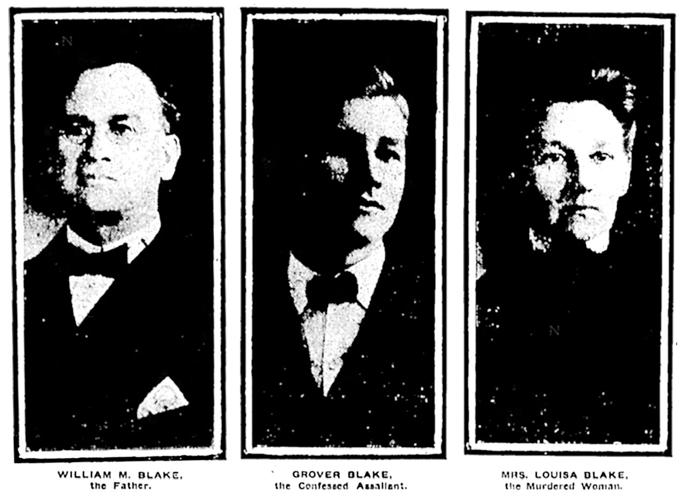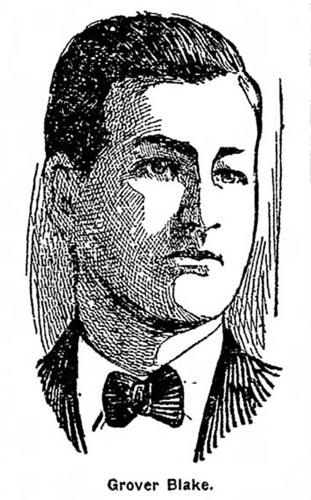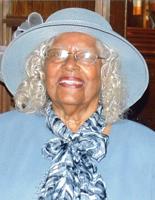ELWOOD — With no marker in sight, writer Janis Thornton a week ago stood in the shade of an old white oak tree she believed covered the grave of Andrew Jackson “A.J.” Baker at Beech Grove Cemetery in Muncie to take a picture featured in her blog.
She’d been to the site in June 2017 to look for the grave of the late butcher from Elwood who on Sept. 3, 1903, fatally shot Fred Kaiser, the husband of his alleged paramour, at the corner of Anderson and Main streets.
“Some might call it a shady grave for a shady character, and I couldn’t disagree,” she wrote.
The cemetery visit was part of a monthlong “Road Trip with the Dead,” to visit the final resting places of victims and murderers. The visits coincided with the release of Thornton’s latest book, “No Place Like Murder,” a look at infamous historical murders throughout central Indiana.
Baker’s killing of Kaiser was the first in the 30 years since the city of Elwood became incorporated and is one of the 20 sensational crimes that took place between 1869 and 1950 chronicled in the book. It’s one of three tales that involve people from Madison County.
Already a fiction writer with a specialty in mystery, Thornton last year turned to true crime with the release of “Too Good a Girl” about the 1965 murder of her Tipton High School classmate, Olene Emberton.
A former journalist, Thornton became interested in historical murders about 15 years ago when she found a cache of articles labeled “Local Murders” in the basement of the Frankfort Times newspaper building where she was looking for information on a 1988 homicide in Michigantown. Quickly finding what she was searching for, Thornton let her curiosity take over and went down the rabbit hole, reading the brittle, yellowed clips.
“They were riveting, told in a style that was as vivid, colorful, and sensational as any Stephen King novel I’d read,” she wrote for a promotional piece about her latest book.
In 2013, Thornton said, she started researching and writing the stories for “No Place Like Murder,” though she didn’t set a personal deadline. Initially, she thought the story about Emberton would be included in the book, but it took on a life of its own.
“I find these old stories really interesting, especially because people didn’t know about them,” she said.
Though her research started with the cache of clips and microfilm at libraries, Thornton, who now is office manager for the Elwood Chamber of Commerce, soon discovered Newspapers.com, which allowed her to go through publications manually in search of stories to tell. The ones she selected for publication had to be followed from beginning to end and provide enough detail to tell the story, she said.
In 2016, the cemetery visits actually became a part of the ritual in writing “No Place Like Murder,” published by Quarry Books, an imprint of Indiana University Press, Thornton said. About two years ago, the Muncie native who now lives in Tipton started writing in earnest.
“I thought it would be really interesting to see their graves. I did all this research, and I was to the point where I felt like I knew them, especially, the victims. I felt I was visiting an old friend,” she said. “Right from the beginning, when I visited the first place, I took pictures and figured I might do blogs.”
Ray E. Boomhower, senior editor at the Indiana Historical Society, wrote a foreword to “No Place Like Murder,” which is divided into sections labeled “Wife Killers,” “Loved to Death” and “Deadly Decisions.”
“Crime has always seemed to be something that draws writers,” he said.
Thornton’s treatment of their tragic tales, Boomhower said, maintains the dignity of the victims.
“She does it with a deft touch, I believe, and has a real affinity for the victims of these crimes. She doesn’t let the thrill for these people overwhelm her sympathy for the victim,” he said.
The real lesson from “No place Like Murder,” Boomhower said, is though we often tend to glorify the past, murder is as old as human existence and those in Indiana go back to the state’s early history.
“Sometimes we tend to concentrate on the positive aspects of living in this state and forget the dark aspects of our ancestors. Sometimes we put a gloss on ‘the good old days,’ and sometimes they weren’t ‘the good old days,’” he said.
Madison County Historian Stephen Jackson said the three local crimes highlighted by Thornton are just a tiny number of murders that have taken place here since the county was incorporated in the 1820s.
“It’s just part of our fabric. It’s a tragic part of our fabric,” he said. “Not all history is rosy. I salute her for writing about that. I think any exposure to our past, whether good or bad, is healthy for the county.”
He said there have been five major histories of the county written, and only one, “Historical Sketches and Reminiscences of Madison County, Indiana” by John L. Forkner and Byron H. Dyson, touches on its dark past.
“It has countless stories in it about murders in Madison County,” he said. “I remember when I got into it I thought, that’s a part of life. Every community is going to have that in it.”















